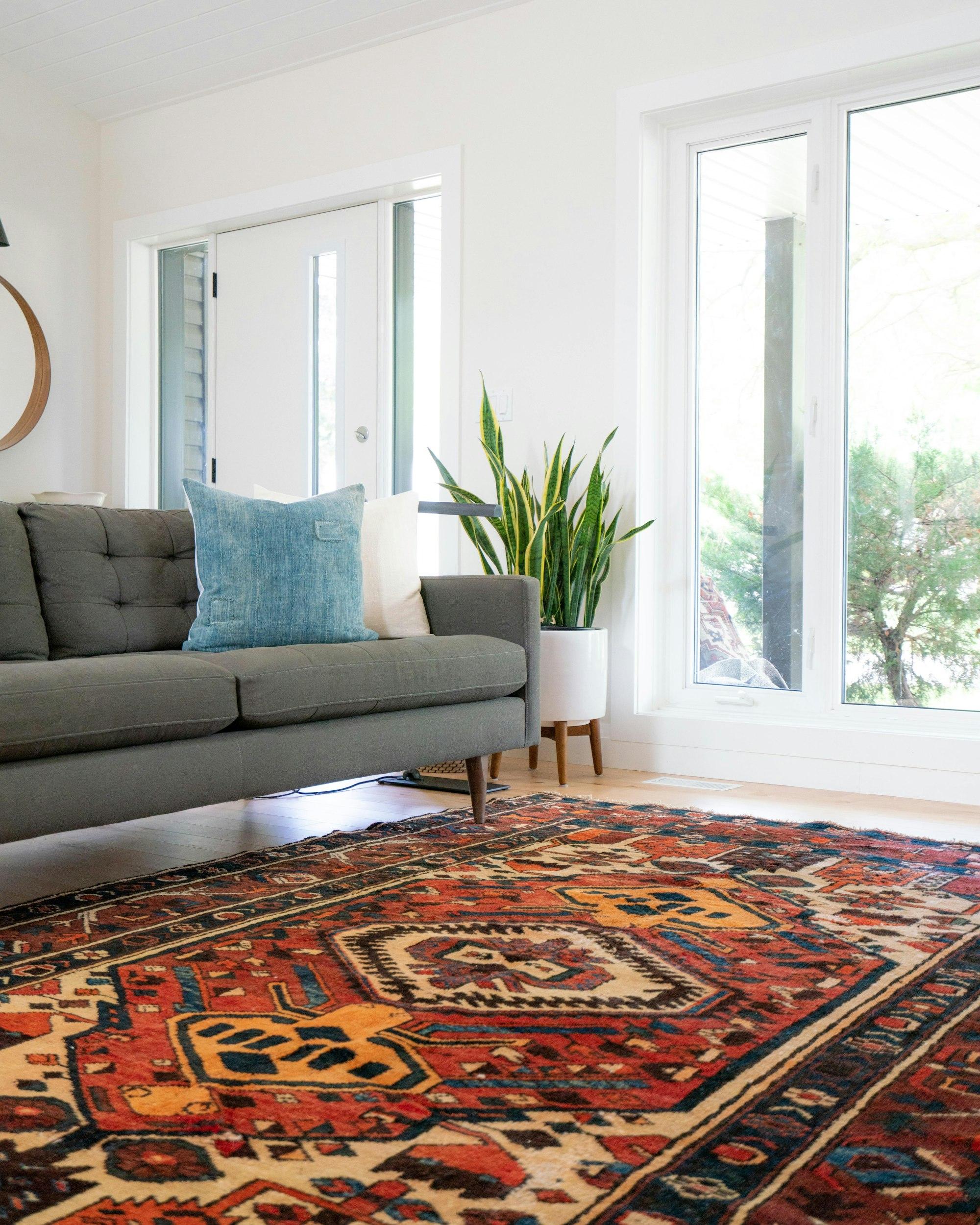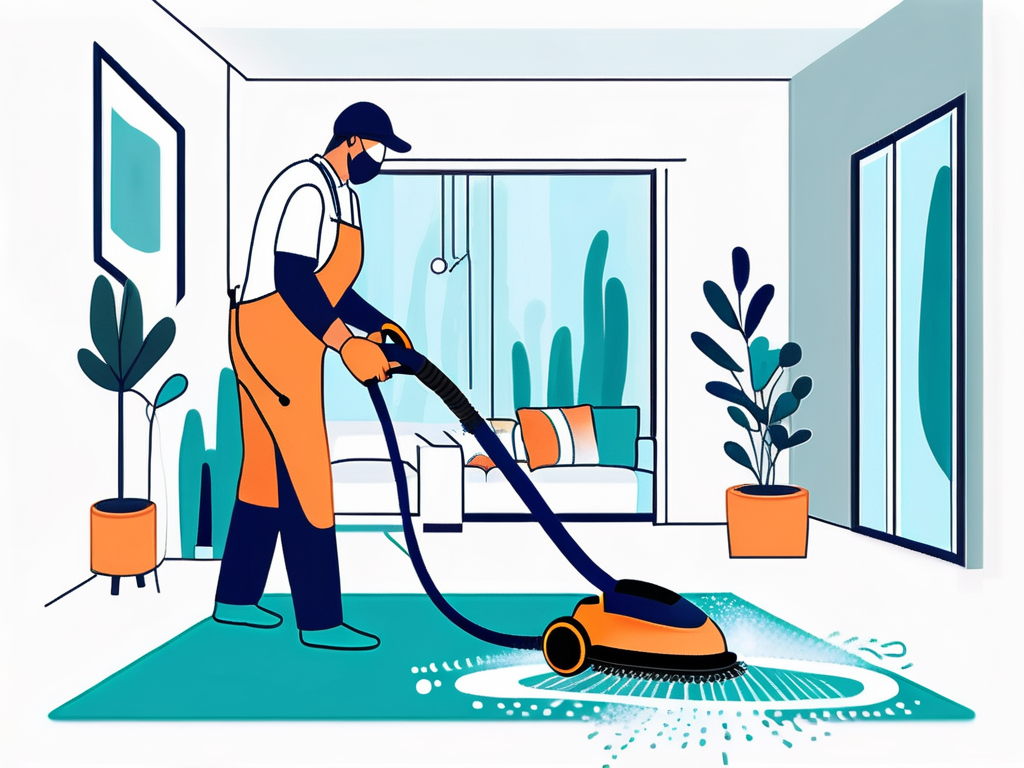How to Clean a Rug: Area Rugs, Oriental Rugs, and More
Need to clean your rug? Learn how to clean area rugs, Oriental rugs, and more with our comprehensive guide. From spot treatments to deep cleaning, discover the best techniques to keep your rugs looking their best.

Rugs are a beautiful addition to any home, adding warmth and character to a space. However, they also tend to accumulate dirt, dust, and stains over time, making regular cleaning essential to maintain their beauty and prolong their lifespan. In this comprehensive guide, we will explore the various steps and techniques involved in cleaning different types of rugs, ensuring that you are equipped with the knowledge and skills needed to maintain spotless and well-maintained floor coverings in your home.
The Ultimate Guide to Rug Cleaning
Cleaning a rug may seem like a daunting task, but with the right approach and tools, it doesn't have to be. In this section, we will delve into some useful tips and tricks to help you choose the right cleaning supplies for your rug.
Tips for Choosing the Right Cleaning Supplies
When it comes to cleaning rugs, using the appropriate cleaning supplies is crucial. Here are a few tips to guide your selection:
- Consider the material of your rug: Different rug materials require different cleaning solutions. For example, delicate rugs made of silk or wool may require more gentle products, while synthetic fibers can withstand stronger cleaners.
- Read the labels: Always check the labels on cleaning products to ensure they are safe and suitable for your specific rug material.
- Test on a small area first: Before applying any cleaner to your entire rug, test it on a small, inconspicuous area to ensure it doesn't cause any discoloration or damage.
By following these tips, you can choose the right cleaning supplies that will effectively remove dirt and stains without causing harm to your rug's fibers.

Understanding Different Rug Materials for Proper Cleaning
Each rug material requires specific cleaning methods and approaches to avoid potential damage. In this section, we will explore the characteristics of different rug materials and how to best clean them:
- Synthetic Fibers: Rugs made of synthetic fibers, such as nylon or polyester, are generally more durable and can withstand more aggressive cleaning methods. You can use mild detergent or carpet cleaners to remove stains and dirt effectively.
- Wool: Wool rugs are known for their softness and durability. To clean a wool rug, it's best to use a mild detergent and avoid excessive scrubbing, as it can cause the fibers to become matted.
- Silk: Silk rugs require delicate care to preserve their beauty. It's recommended to consult a professional cleaner for silk rug maintenance, as they have the expertise to handle and clean these delicate fibers.
- Jute and Other Natural Fiber Rugs: Natural fiber rugs, including jute and sisal, have gained popularity due to their eco-friendly properties. Cleaning these rugs usually involves gentle vacuuming or dry cleaning to avoid water damage.
By understanding the characteristics of your rug materials, you can tailor your cleaning approach to ensure optimal results without compromising the integrity of the fibers.
Now that you have a better understanding of how to choose the right cleaning supplies and how to clean different rug materials, let's explore some additional tips for maintaining the longevity and beauty of your rugs.
1. Regular Vacuuming: One of the most important steps in rug maintenance is regular vacuuming. This helps to remove loose dirt and debris that can accumulate on the surface of the rug. Be sure to use a vacuum cleaner with adjustable suction settings to avoid damaging delicate fibers.
2. Rotate Your Rug: To prevent uneven wear and tear, it's recommended to rotate your rug every six months. This ensures that the rug's fibers receive equal exposure to foot traffic and sunlight, helping to maintain its overall appearance.
3. Spot Cleaning: Accidents happen, and when they do, it's important to address them promptly. For small spills or stains, blot the affected area with a clean cloth or paper towel to absorb as much liquid as possible. Avoid rubbing the stain, as it can cause it to spread. Use a mild detergent or a specialized rug cleaner to gently remove the stain, following the manufacturer's instructions.
4. Professional Cleaning: While regular maintenance can go a long way in keeping your rug clean, it's also beneficial to have it professionally cleaned every 12 to 18 months. Professional cleaners have the expertise and equipment to deep clean your rug, removing embedded dirt and allergens that regular vacuuming may not be able to reach.
By incorporating these additional tips into your rug cleaning routine, you can ensure that your rugs not only look clean but also maintain their quality and longevity for years to come.

Deep-Cleaning Your Interior Rug Like a Pro
Regular vacuuming can help keep your rug clean on the surface. However, to remove deep-seated dirt and grime, a thorough deep-cleaning is necessary. In this section, we will explore professional techniques as well as DIY methods you can use to deep-clean your interior rug.
Professional Techniques for a Thorough Clean
When it comes to achieving a deep and effective clean for your interior rug, professional rug cleaners have a few tricks up their sleeves. These experts employ various techniques to ensure your rug is left looking and feeling as good as new.
- Hot Water Extraction: This method involves using hot water and detergent to penetrate the rug's fibers, loosening dirt and stains. The high-powered vacuum then extracts the solution along with the dirt, leaving your rug refreshed and revitalized.
- Steam Cleaning: Another popular technique used by professionals is steam cleaning. By using steam to agitate the rug's fibers, this method effectively lifts dirt and stains. The high temperature of the steam also helps kill bacteria and allergens, making your rug not only clean but also hygienic.
While professional techniques can yield exceptional results, it's important to note that they can be quite costly. However, if you're up for the challenge and want to save some money, there are also effective DIY deep-cleaning methods you can utilize.
DIY Deep-Cleaning Methods for Interior Rugs
If you prefer a hands-on approach or want to save some money, here are a few DIY deep-cleaning methods for your interior rug:
- Baking Soda and Vinegar: This powerful combination can work wonders on your rug. Start by sprinkling baking soda liberally over the rug, focusing on heavily soiled areas. Let it sit for a few hours to absorb odors and loosen dirt. Then, vacuum it up. Next, mix equal parts vinegar and water in a spray bottle, and lightly mist the rug. Finally, blot the rug with a clean cloth to remove stains and odors, revealing a fresh and clean surface.
- Dish Soap Solution: For a gentler yet effective approach, mix a few drops of dish soap with warm water in a bucket. Using a sponge or soft-bristle brush, gently scrub the rug in a circular motion, paying extra attention to any stubborn stains. Rinse with clean water and blot dry with a towel. This method will leave your rug looking clean and smelling delightful.
These DIY methods can help you achieve a deep-clean for your interior rugs, ensuring they remain fresh and free from dirt and stains. Whether you choose to hire a professional or take matters into your own hands, a clean rug will not only enhance the appearance of your space but also contribute to a healthier and more comfortable environment.
Now that you're equipped with the knowledge to keep your rugs in pristine condition, why not ensure you're getting the best value on your home essentials too? Visit Spoken to make smarter shopping decisions with detailed price comparisons across various retailers. Don't let rebranding tactics make you overpay for identical products. Let Spoken guide you to the best deals and quality items for your space. Check out products on Spoken and transform your informed cleaning routine into an informed shopping experience.
Quick facts
What is the best thing to clean a rug with?
The best way to clean a rug is using a mild detergent or rug-specific cleaner with warm water. Spot clean with a soft brush or cloth, then rinse and dry.
How can I deep clean my carpet myself?
To deep clean your carpet at home, use a carpet cleaner or create a solution with water, vinegar, and dish soap. Scrub gently, rinse, and allow to dry.
What is the best homemade solution for cleaning carpets?
A mix of vinegar, baking soda, and water works well as a homemade carpet cleaner. Apply it to stains, let it sit, then blot and rinse.
Can Dawn and vinegar clean carpet?
Yes, Dawn dish soap and vinegar can clean carpets. Mix them with water, apply to stains, scrub gently, and rinse thoroughly.
How can I clean my rug at home by myself?
To clean a rug at home, vacuum thoroughly, spot clean stains with a mild detergent, rinse with clean water, and dry completely.
How can I clean my rug by hand?
Clean your rug by hand using a bucket of warm water, mild detergent, and a soft brush. Scrub gently, rinse, and air dry flat.
How to clean an area rug on a hardwood floor?
To clean an area rug on hardwood, vacuum it first, spot clean with a damp cloth, and avoid soaking to protect the floor underneath.

Dane Hurtubise
Co-founder & CEO of Spoken
Dane Hurtubise is the Co-founder & CEO of Spoken. He has led two venture-backed companies and is a two-time Y Combinator alum. Prior to Spoken, Dane sold his previous company, Parklet, to Greenhouse Software where he served as VP of Platform and Partnerships. An avid runner, cyclist, and Pilates enthusiast, Dane holds a BS in Electrical and Computer Engineering from the University of Texas at Austin.
Read more